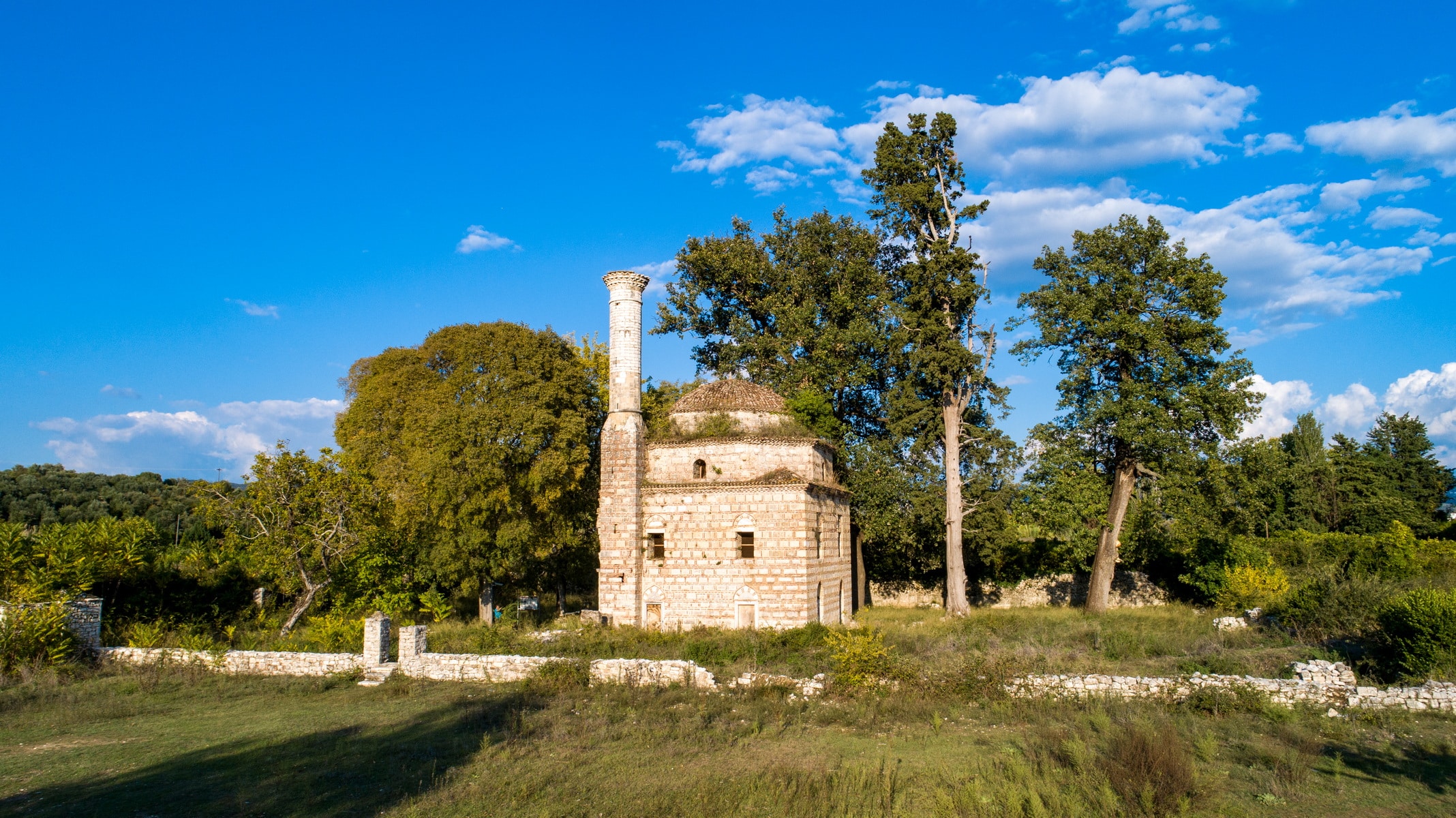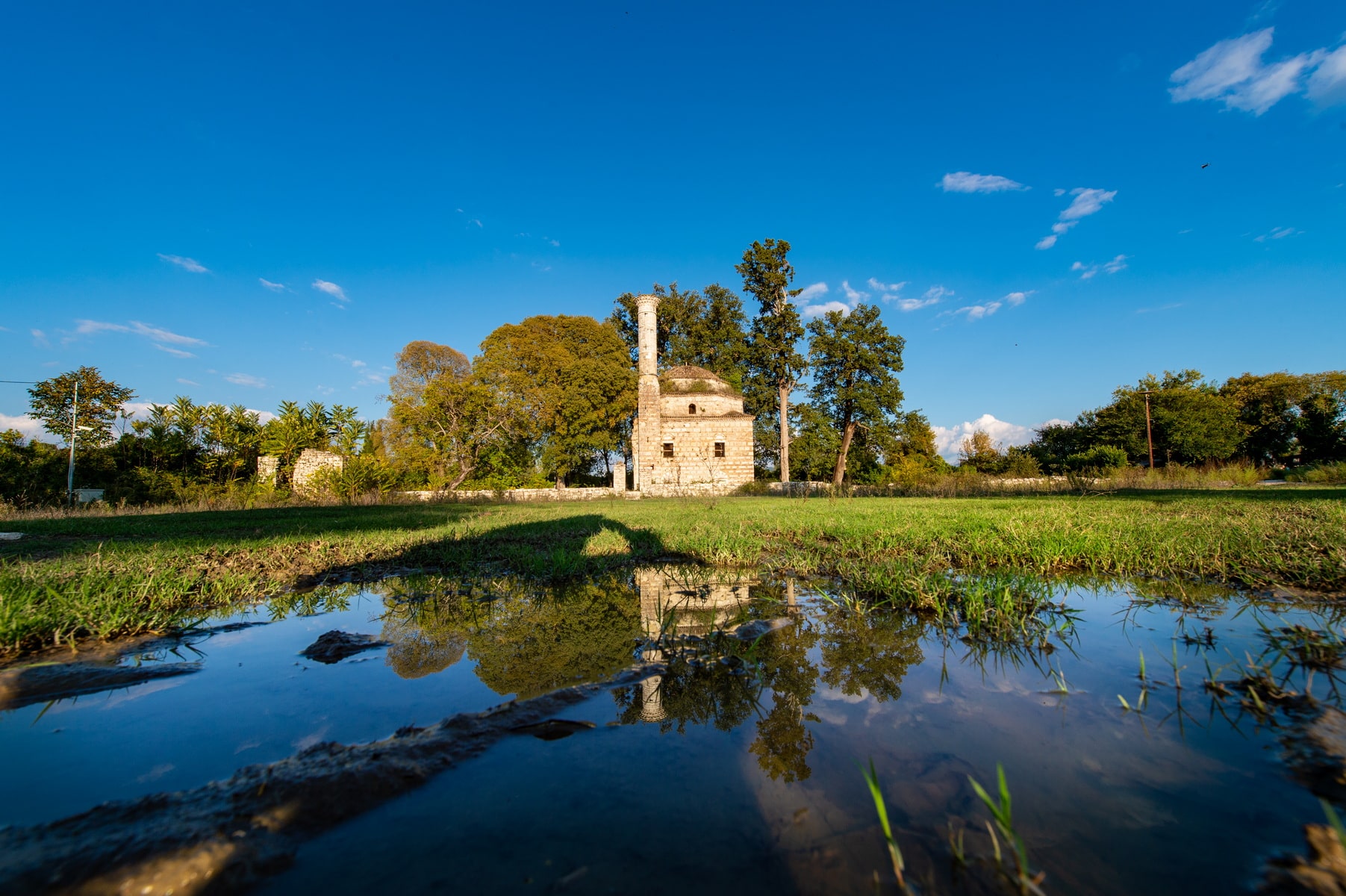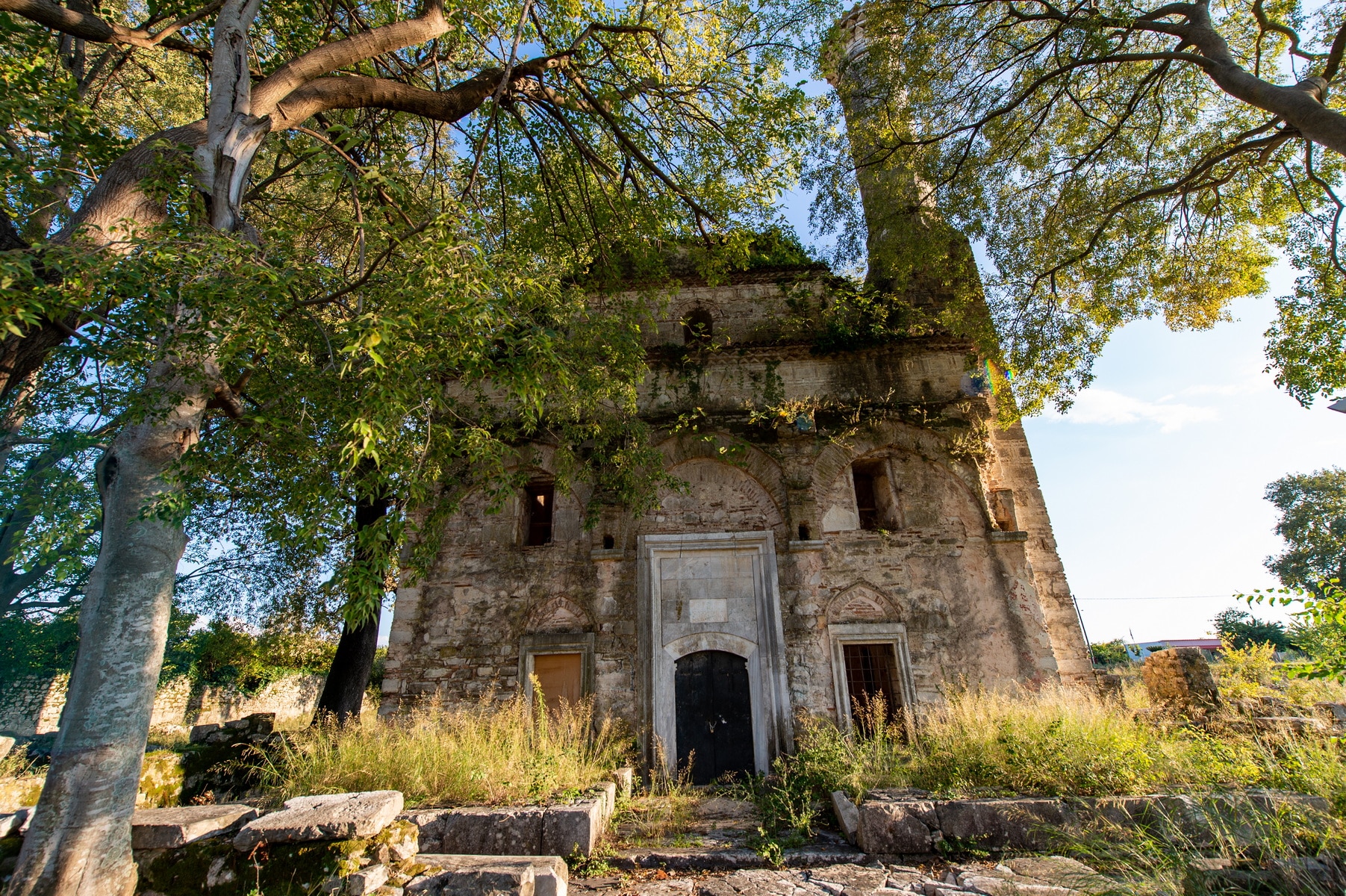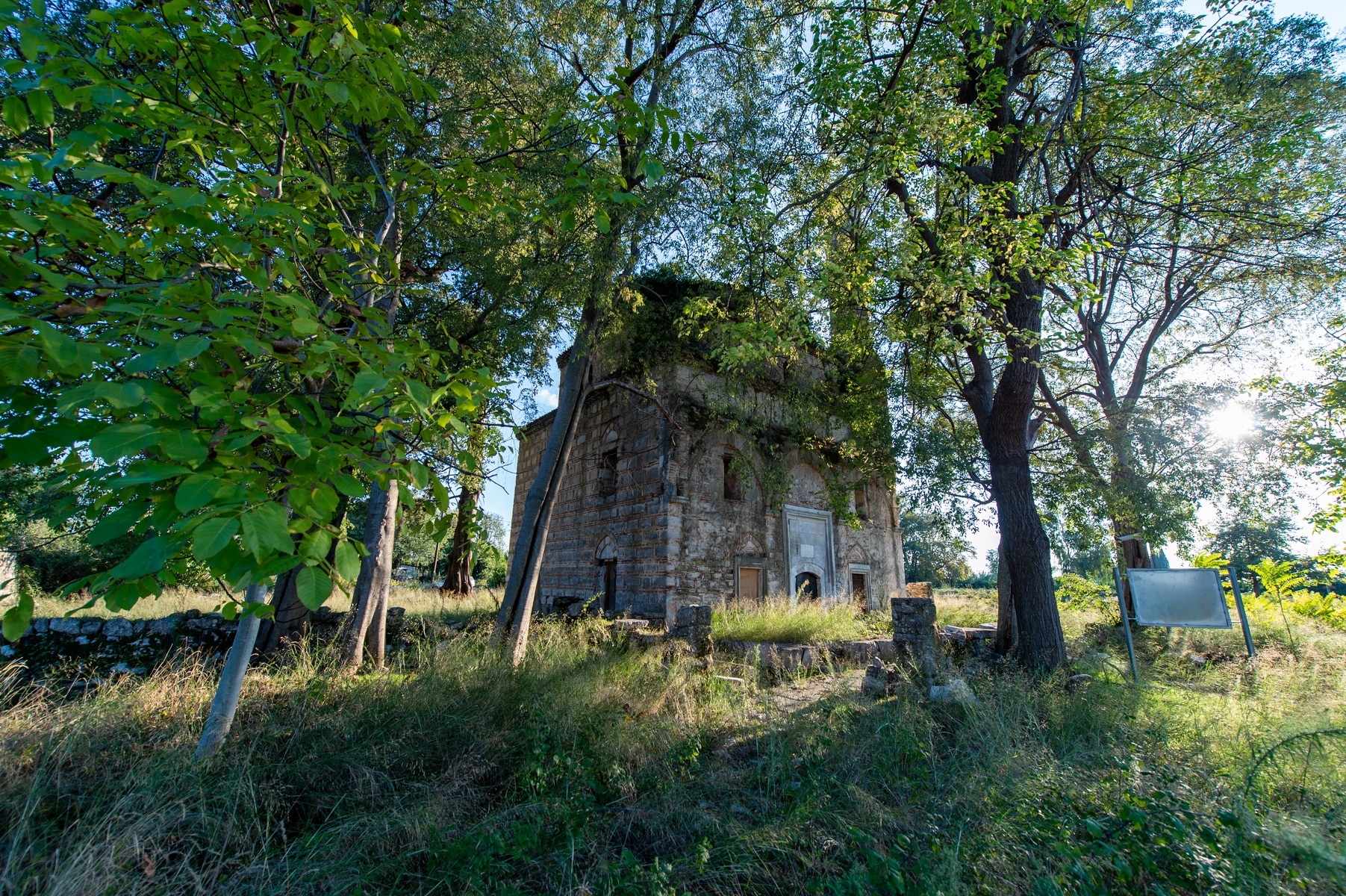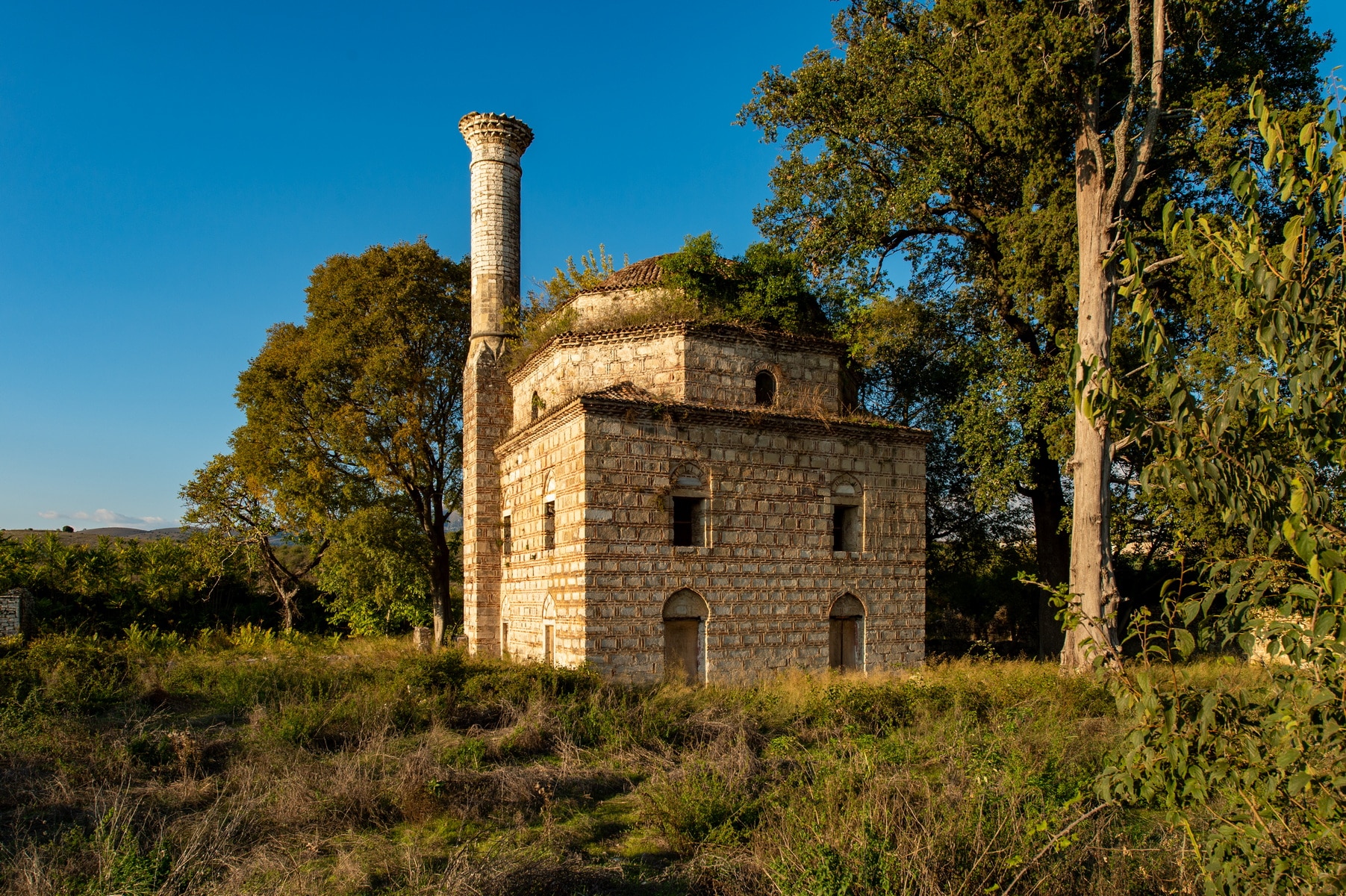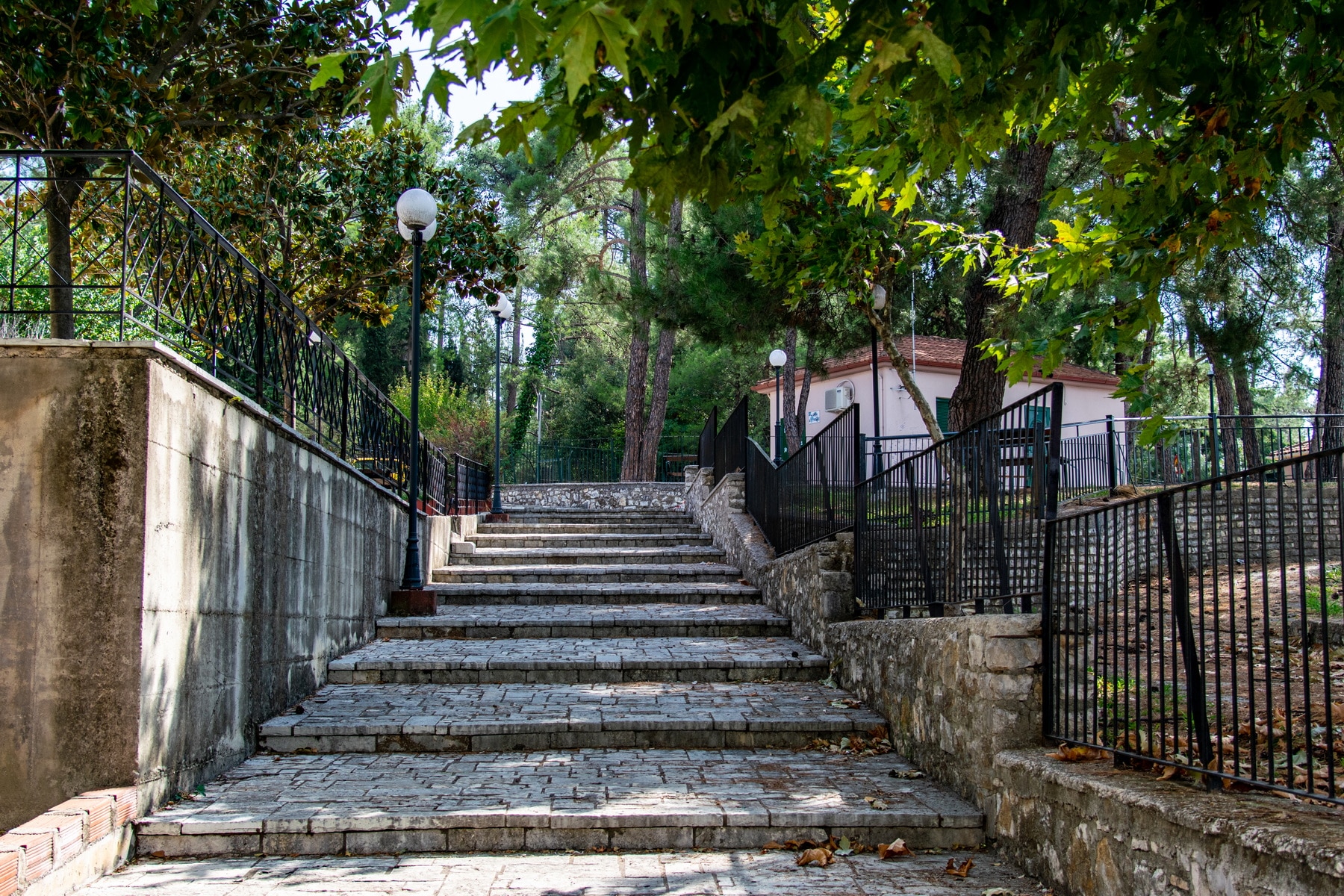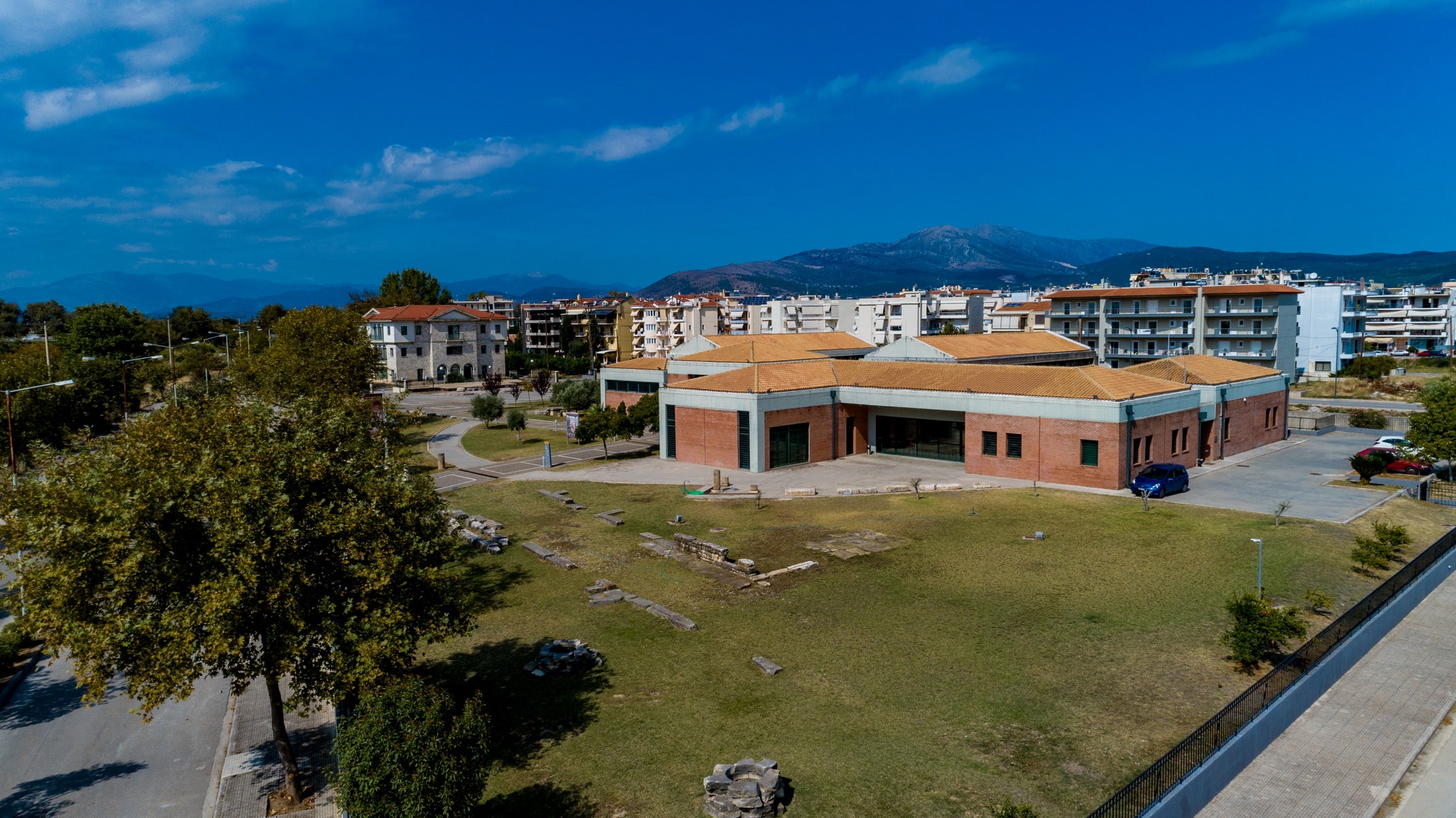“Imaret – In the shadow of the clock”” is the title of the novel by Giannis Kalpouzos and refers to the Ottoman monument of Arta.
The Faik Pasha Mosque, also known as Imaret, is, along with the Faizul Mosque, one of the two preserved mosques in Arta. It lies next to the banks of the Arachthos River, at the site of Marati, near the Grammenitsa village, and about 3 km from the city’s historic bridge. The broader area around Imaret was formerly called Top-Alti, which described the entire area within the range of the cannons fired at the castle.
According to Anastasios Orlandos, the village of Marati was named after the Imaret. Faik-pasha, the first governor of Arta after the occupation in 1449, wanted to leave a lasting legacy by building the Imaret (poorhouse), where many poor inhabitants took refuge. Together with the poorhouse, he founded the mosque and a building complex that included a madrasa (educational institution), an inn, and a hammam.
Like most mosques in Greece and the Balkans, the mosque belongs to type A. It consists of a simple single-room square floor plan, with a side length of 11.50 m. It is housed with a dome. A portico supported by a colonnade lies at the entrance, and a cylindrical minaret that rises on a square base is located on the north side.
According to archeological findings, the mosque was probably built on the ruins of a Byzantine temple dedicated to Saint John the Baptist. The building material for its construction was transferred from the old Byzantine church of Parigoritissa in Nikopolis and various ancient buildings in Amvrakia. Some of the architectural members of the portico came from the Byzantine church of Panagia Pantanassa, which was founded in the middle of the 13th century by Michael II Komnenos Doukas.
The mosque owned agricultural land in the villages of Vigla and Maratii (part of today’s village Polydroso in Arta) and reaped the profits from their exploitation. Before the occupation of Arta by the Ottomans, these areas were the property of the Panagia Rodia monastery. The number of the estates was significant, and Faik Pasha took most of them to finance the mosque.
According to oral information gathered in the 19th century by the Metropolitan of Arta, Seraphim Xenopoulos, from an Ottoman resident of the city, Faik Pasha himself took over the position of Imam in the mosque after first resigning from his military and political office. He did this because he found no one worthy of this post after the death of the previous Imam he had appointed. He remained in this position for 40 years, always according to S. Xenopoulos, when in the year ΑΗ 905, that is, in 1499. The date is inscribed on a tombstone found in the area, indicating that Faik Pasha may have been buried in Imaret. Based on this information, the metropolitan of Arta placed the construction of the mosque in the year 1455 (ΑΗ 860), at the time when the sultan of the Ottoman Empire was Muhammad II, the Conqueror. In fact, the grandeur of the mosque of Faik Pasha was such that, according to S. Xenopoulos, the sultan ordered the construction of another mosque inside the castle of Arta dedicated to him. However, according to other scholars, this mosque was built later, around 1492 – 1493, during the reign of Bayezid II.
The mosque hosted many battles during the Siege of Arta. According to Ioannis Makrygiannis, on the 14th November 1821, Markos Botsaris was fortified in the mosque with 300 men. Several leaders joined him in Marati, among them Georgios Karaiskakis. On 15th November, the Turks launched a continued cannonade against Marati, causing significant losses on the Greek side and forcing several soldiers to flee. Markos Botsaris and Georgios Karaiskakis were locked in the mosque. They repulsed the attacks of the Turks until the moment when Notis Botsaris appeared on the heights of Marati, with 300 men, and all together, they pushed the Turks back to Arta. Panagiotis Aravantinos confirms the battles in Marati but claims that Andreas Iskos was the leader, and after the intervention of Markos Botsaris, the Turks fled.
The mosque is mentioned in the work of William Martin Leake, a 19th-century traveler, who reported that there were plenty of hazelnuts in Marati. François Pouqueville, a Gaul traveler and diplomat (late 18th to early 19th century), informs us about the significant number of oranges, lemons, olive trees, and reeds that covered the area. Finally, Seraphim Xenopoulos states that in 1884 about 10 Christian families and six to seven Ottomans, who prayed in the mosque, lived in the area around it.
During the unfortunate Greek-Turkish war of 1897, the area around the mosque became once more a battlefield between the Greek forces under the command of Colonel Thrasyvoulos Manos and the Turkish forces under Ahmet Hifsi Pasha. In May 1897, the first truce on the Epirus front was signed in the Imaret area and was officialized on the 3rd of June in Arta.
After the liberation of Arta, the mosque was converted into a church dedicated to St. John the Russian. In 1938, by royal decree, the mosque was declared a protected historical site.
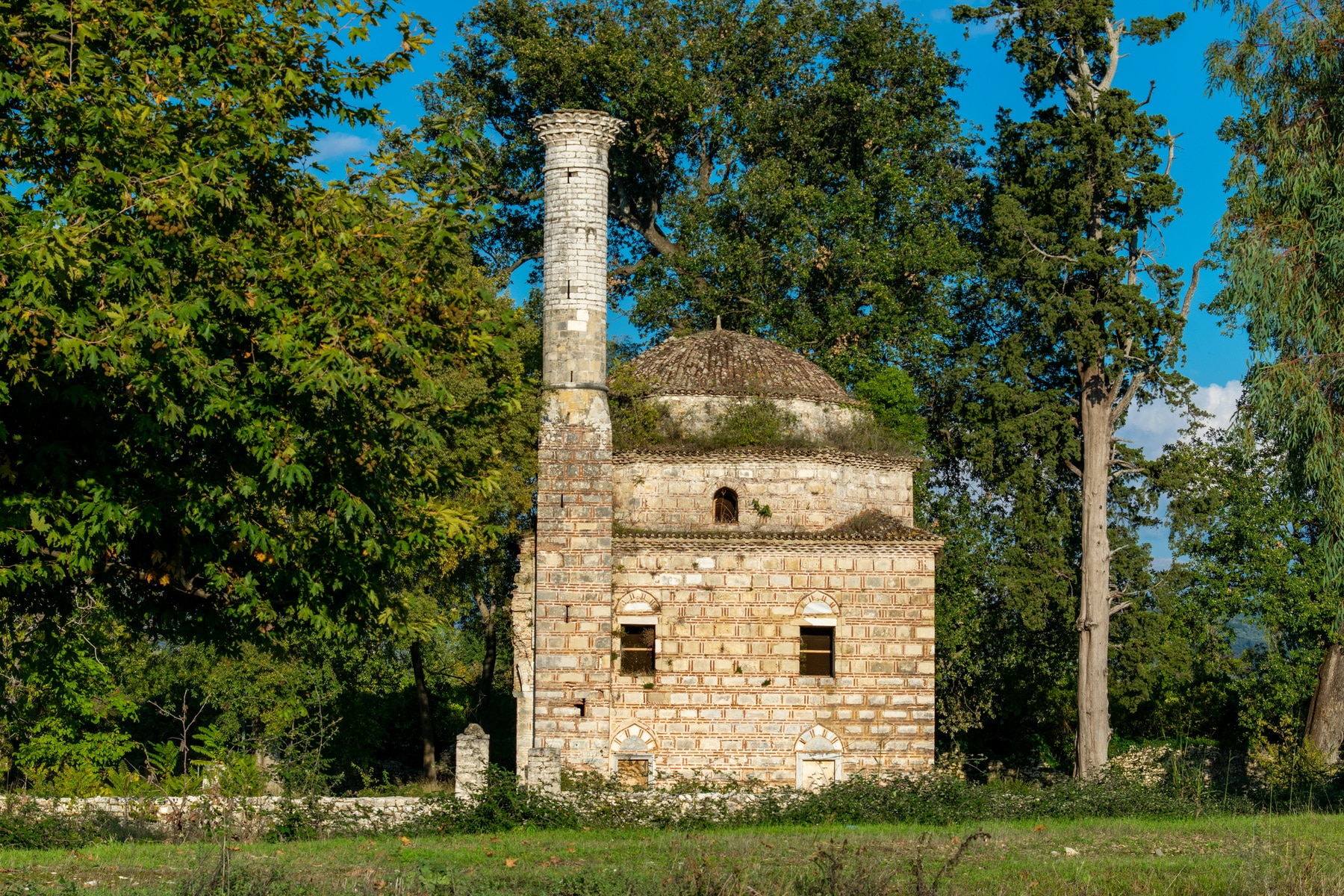
Faik Pasha Mosque (Imaret)




